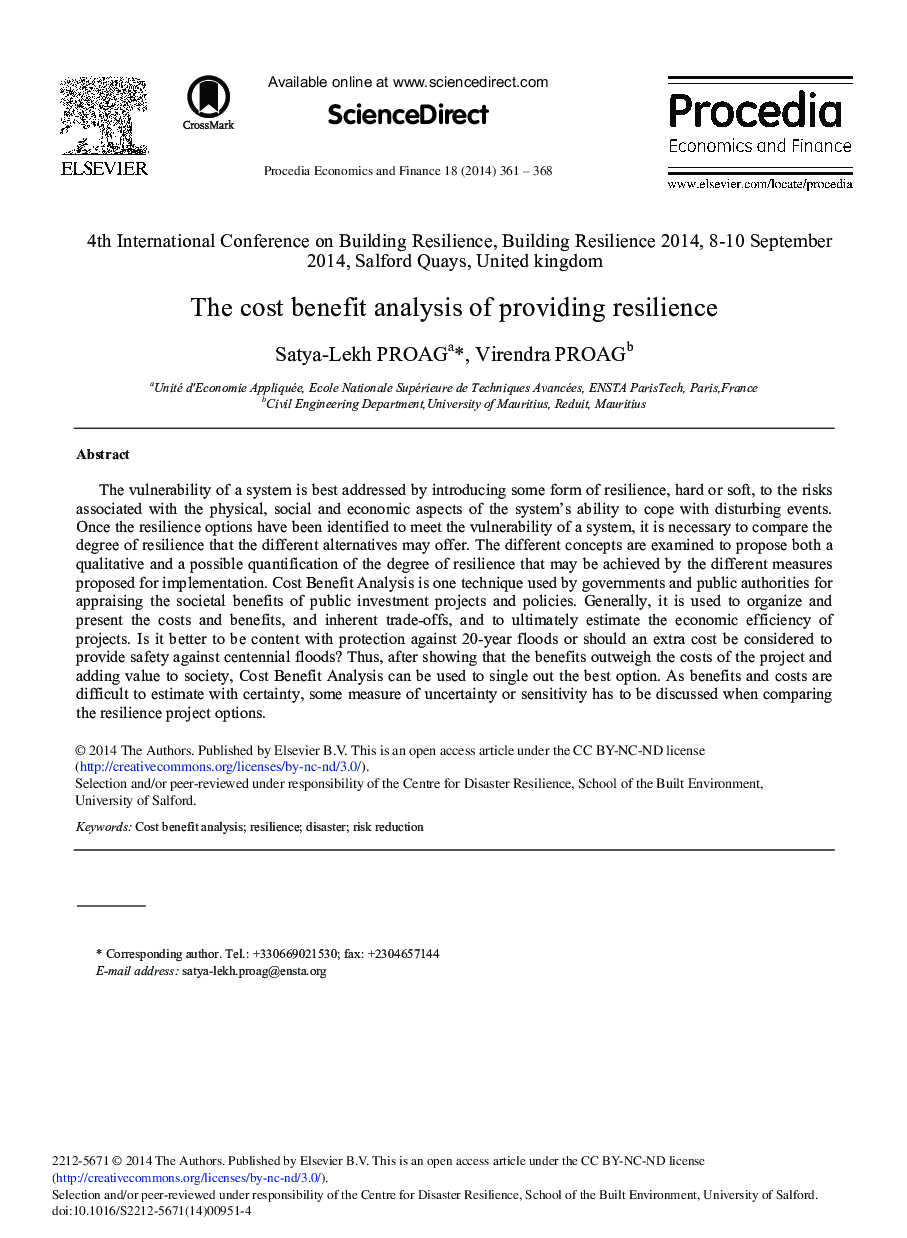| Article ID | Journal | Published Year | Pages | File Type |
|---|---|---|---|---|
| 981515 | Procedia Economics and Finance | 2014 | 8 Pages |
The vulnerability of a system is best addressed by introducing some form of resilience, hard or soft, to the risks associated with the physical, social and economic aspects of the system's ability to cope with disturbing events. Once the resilience options have been identified to meet the vulnerability of a system, it is necessary to compare the degree of resilience that the different alternatives may offer. The different concepts are examined to propose both a qualitative and a possible quantification of the degree of resilience that may be achieved by the different measures proposed for implementation. Cost Benefit Analysis is one technique used by governments and public authorities for appraising the societal benefits of public investment projects and policies. Generally, it is used to organize and present the costs and benefits, and inherent trade-offs, and to ultimately estimate the economic efficiency of projects. Is it better to be content with protection against 20-year floods or should an extra cost be considered to provide safety against centennial floods? Thus, after showing that the benefits outweigh the costs of the project and adding value to society, Cost Benefit Analysis can be used to single out the best option. As benefits and costs are difficult to estimate with certainty, some measure of uncertainty or sensitivity has to be discussed when comparing the resilience project options.
